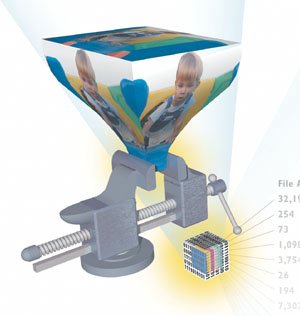Chapter 32. How FTP Works
| One of the most popular uses of the Internet is to download filesthat is, transfer files from a computer on the Internet to your computer. These files can be of many types: programs that you can run on your own computer; graphics you can view; sounds and music you can listen to; or text files that you can read. Many tens of thousands of files are downloaded every day over the Internet. Most of those files are downloaded using the Internet's File Transfer Protocol, commonly referred to as FTP. You can also use FTP to upload files from your computer to another computer on the Internet. FTP, like many Internet resources, works on a client/server model. You run FTP client software on your computer to connect to an FTP server on the Internet. On the FTP server, a program called an FTP daemon (pronounced "demon") allows you to download and upload files. To log on to an FTP site and download files, you must type in an account number (or username) and a password before the daemon will allow you to enter. Some sites allow anyone to enter and download files, but an account number (or username) and password must still be entered. Often, to get in, you use anonymous as your username and your email address as your password. Because of this, these sites are often referred to as anonymous FTP sites. Some FTP sites are private and allow only certain people with the proper account number and password to enter. FTP is fairly simple to use. When you log on to an FTP site, you can browse through the available files by changing directories and seeing a listing of all the files available in each directory. When you see a file you want to download, use your client software to instruct the FTP server to send you the file. As the World Wide Web gains popularity, downloading software is becoming even easier. You can use your web browser and click links to files. Behind the scenes, FTP is often still downloading the files. FTP remains the most popular way to download files from the Web and the Internet. The HTTP protocol of the Web can be used for downloading files from the Web, but it's not as efficient as FTP, so it isn't used as frequently. One problem with downloading files over the Internet is that some files are so large that it can take a tremendous amount of time to download them, even when you use a high-speed, broadband connection. As a way to speed up file transfers and save space on the FTP server, files are commonly compressed, or shrunk in size using special compression software. Many different methods are used to compress files. Depending on the file type, files are usually compressed from 1050%. After downloading the files, you'll need to run the compression software on your own computer to decompress the files so you can use them. |
EAN: 2147483647
Pages: 223
